
1952 saw the not totally unexpected ascension of Queen Elizabeth to the throne of England. Her father, Albert, who took the title of George the VI, had been in ill health for some time and Elizabeth often stood in for the king at official functions. He was not necessarily unhappy with this state of affairs as King George, known as Bertie, had never wanted to be King. Shy and with a severe stutter, his capacity for kingship had been questioned by the British public when the crown was forced upon him by the abdication of his brother Edward. Edward chose his love of American divorcee Wallis Simpson over the power of the throne. Albert, when informed he had become king, was said to have broken down in tears during a meeting with the Queen Mother during which he expressed his reluctance to take the crown.

The death of a British monarch very often results in both predictable and unforeseen difficulties—princes arguing over the scepter, life and death battles over regency when the heir to the throne is a minor, and the odd poisoning which sometimes results in a steady stream of royalty and retainers up and down the stairs of the Tower of London. The new queen’s namesake, Elizabeth I (1533 – 1603), not only had her food tested for poison but by royal order “all manner of things that shall touch any part of her Majesty’s body bare” had to be guarded and tested as she was suspicious, not without reason, of a Catholic plot to seize the throne. In the case of Elizabeth II the problem was more mundane. When her father died Elizabeth was in Kenya on a goodwill tour and was staying in the very remote and less than regal residence pictured above. Called Treetops, it offered in 1952 a view of African wildlife like no other in the world and remains a very popular destination today for those on Kenyan safaris. Elizabeth learned of her father’s death only after the rest of the world had known the King was dead for many hours.
In other world news the groggy Dutch were excited by news that coffee would no longer be rationed, 12 years after it had been imposed at the beginning of World War Two. Rationing remained in effect in England for many items until 1954 but in the United States all rationing ended in 1946. Winston Churchill proudly announced in 1952 that the Brits had developed an atomic bomb, and the U.N. General Assembly met in New York for the first time.
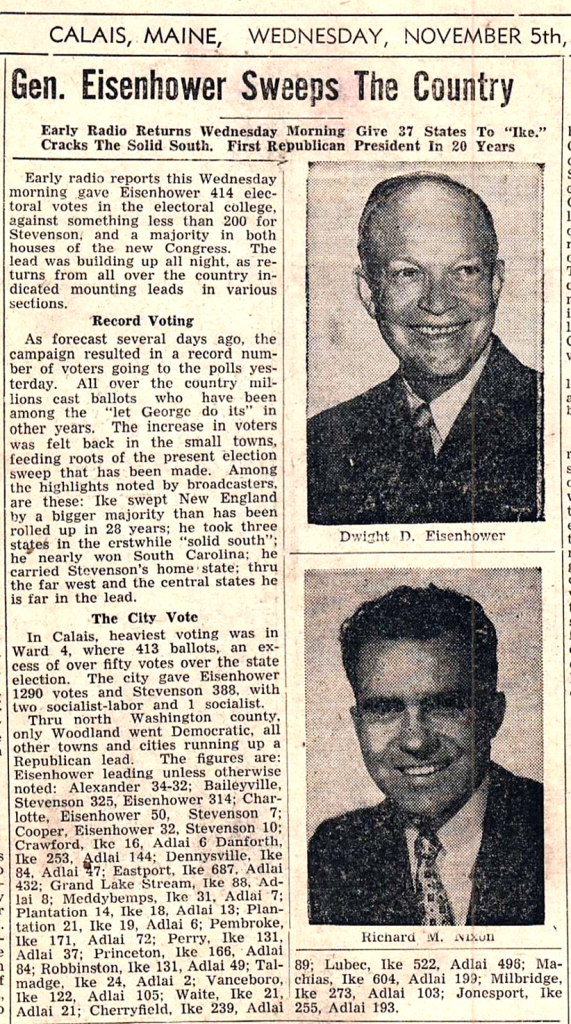
In the United States, Dwight Eisenhower carried Calais—1290 votes to 388 for his opponent Adlai Stevenson—which was enough to propel the former general to the White House with his running mate Dick Nixon tagging along and planning to replace Ike in 1960. Eisenhower was nearly forced to replace Nixon on the ballot just before the election when a secret campaign fund was discovered funded by Nixon backers who, it is alleged, expected to be rewarded for their generosity. In Nixon’s famous Checkers speech, defending himself against the charges, he claimed the money was only for expenses and he agreed to return every penny, but would sooner quit the ticket than return one of the gifts he had received, a dog named Checkers loved by the family but especially by his little daughter Tricia. Checkers probably saved Nixon’s career, at least until one of the most inept burglaries in history put paid to a much-checkered political career.

Some other interesting news of 1952 involved Charlie Chaplin, whose generally pacifistic views had attracted the attention of Wisconsin Senator Joseph McCarthy, Chairman of the House on Un-American Affairs Committee (HUAC). Even though Chaplin had brutally parodied Adolf Hitler in the film “The Little Dictator,” McCarthy dragged Chaplin before the Committee for questioning on his alleged subversive sympathies. Chaplin denied the charge that he was Communist. Chaplin said he was actually a “peace-monger” and assured the committee “I don’t want to create any revolution. All I want is to create a few more films. I might amuse some people. I hope so.” Nonetheless when Chaplin took a holiday with his family to London in 1952 he got word he would be arrested if he returned. Chaplin became the United States’s most famous exile. After McCarthy’s fall Chaplin was told all was forgiven and he could return, to which he replied, “I have no further use for America. I wouldn’t go back there if Jesus Christ was President.” In fact he did return once in 1970 to accept an Oscar.
In other U.S. news President Truman seized all U.S. steel mills, then closed by a strike, and threatened to nationalize the industry. This proved a sufficient incentive for the warring parties to settle the strike.
In sports Ted Williams was recalled to active duty to fly Marine fighters during the Korean War, Whitey Ford pitched consecutive no-hitters, and a fellow named Ron Necciai struck out 27 batters in a minor league game. He was called up by the Pittsburgh Pirates, went 1-6 with a 7.08 ERA, and didn’t pitch another game in the majors. In hockey the New York Rangers were leading the Chicago Blackhawks 6-2 with 14 minutes left in the game and lost in regulation 7-6. Bill Masienko of the Hawks scored three goals in 21 seconds. This still rates as the most epic collapse in hockey history.
In Hollywood the film “African Queen,” starring Humphrey Bogart and Katherine Hepburn opened, and Bogart earned an Academy Award as best actor. “Dragnet” premiered on television as did the “Adventures of Superman,” and Hemingway’s The Old Man and the Sea was published. The first Kentucky Fried Chicken (now KFC) franchise opened in Utah in 1952.

In Calais, Grant’s new store on Main Street opened to much fanfare. Grant’s had had a store in Calais for many years, the original store being on Main Street where the Calais Bookstore is now located.

Silverman’s moved from down the street into the vacated Grant’s building soon after Grant’s moved into their new building. We’re not sure of the date of this photo (the car is a 1961 Chevrolet) but the new Silverman’s store is just next to Jim Kelley’s Clothing Store.

This 1952 photo shows Tom Chambers in front of the St Croix Hotel and standing next to a Jaguar XK-120. Tom was a bellhop at the hotel in those days and had a shoeshine stand in the lobby. John Chambers is his son. In 1952 before Silverman’s moved it was down the block toward Church Street.
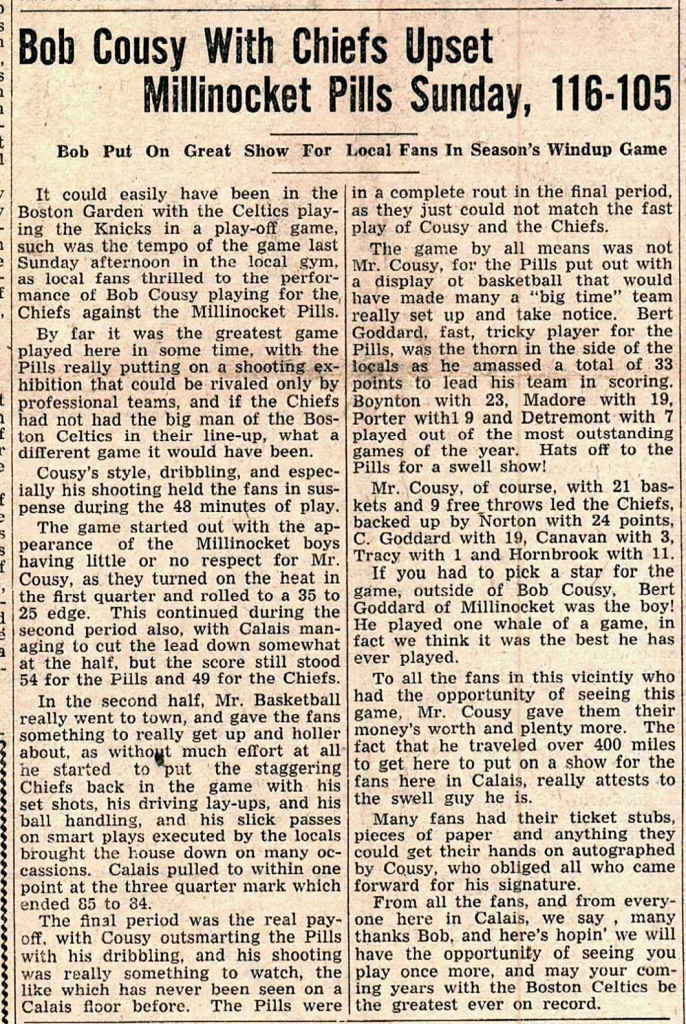
In 1952 Celtics great Bob Cousy came to town and played for the Calais Chiefs in a game against the Millinocket Pills. It’s no surprise that Calais won the game as Cousy scored 51 points, but even the Advertiser had to admit “if the Chiefs had not had the big man of the Boston Celtics in their lineup what a different game it would have been.”

We don’t know what Calais connection Cousy had, if any, but we do have this photo of Bob Cousy with the Calais Fenderson family. The folks in the photo are Willard Fenderson, Anna Fenderson, Bob Cousy, Ethel McElroy, Ethel Kelley and Larry Kelley, the boy. Perhaps Larry has the answer.
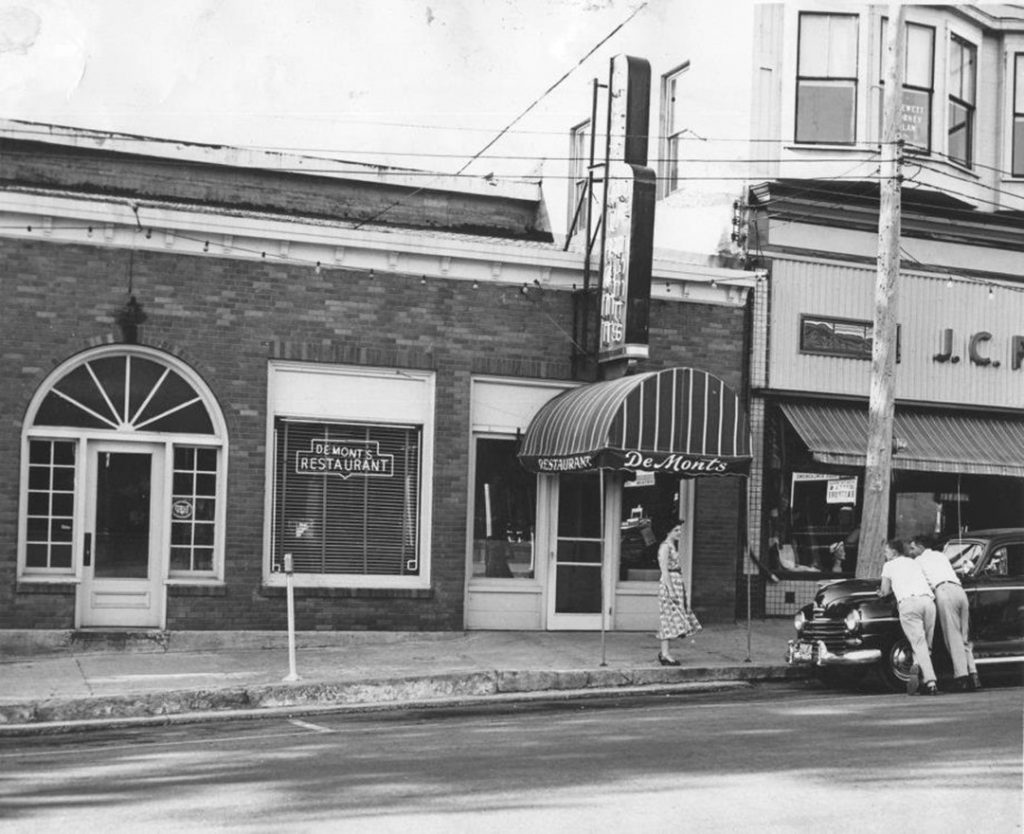
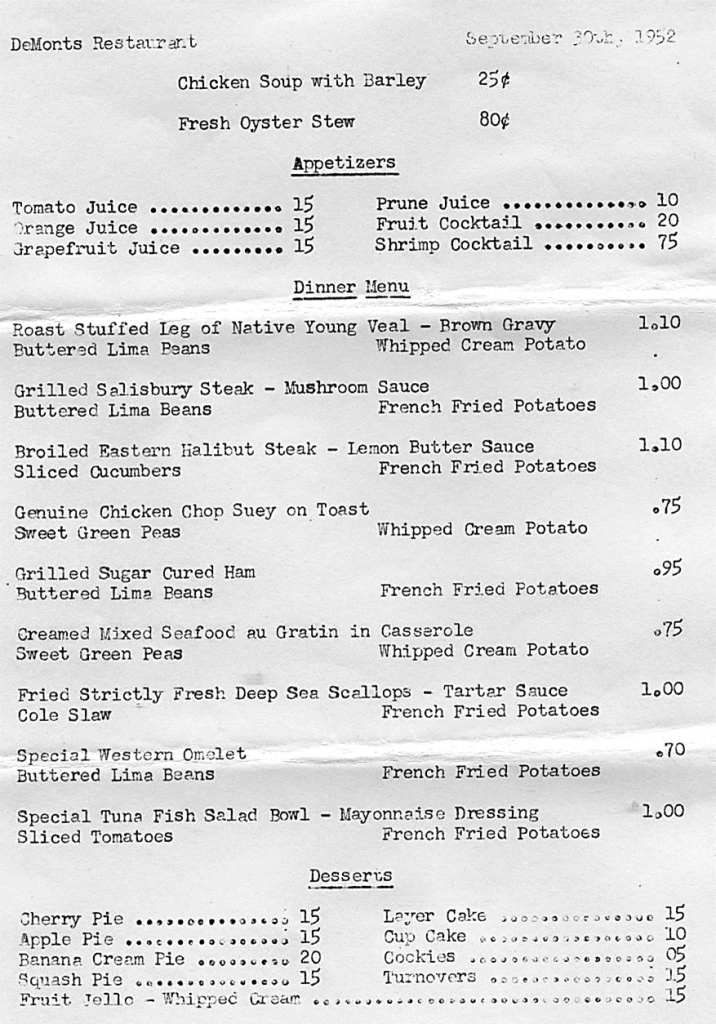
At Demont’s Restaurant in 1952, the food was more than reasonably priced. The most expensive item on this menu dated September 30th was $1.10; an omelet was 70 cents, and a ham dinner a nickel more. Cookies cost five cents and pie fifteen cents at what, along with the Wickachee, was one of the two upscale eateries in Calais in 1952.

Calais installed its first traffic light in 1951, but motorists claimed to be unsure of the significance of the various colors or combinations of colors display by these newfangled signals. This resulted in occasional mayhem at the intersection of North and Main and prompted Police Chief Bobby Kerr to write an article for the Advertiser in 1952 to “clear up considerable confusion on the part of motorists.” Bobby goes on to write “A misunderstanding has arisen because of the fact the amber light is on periodically with the green and with the red. I want to make clear to the public that no motor vehicle is to move except when the green light is on. That is all the motor vehicle operator has to remember. Pedestrians walk on amber and red.” Of course this explanation is itself confusing as the green light is sometimes on with the amber although later Bobby does say motorists should proceed only when the green light alone is on. By 1952 Bobby Kerr had been Chief of Police for nearly 30 years but was soon to be involuntarily retired.
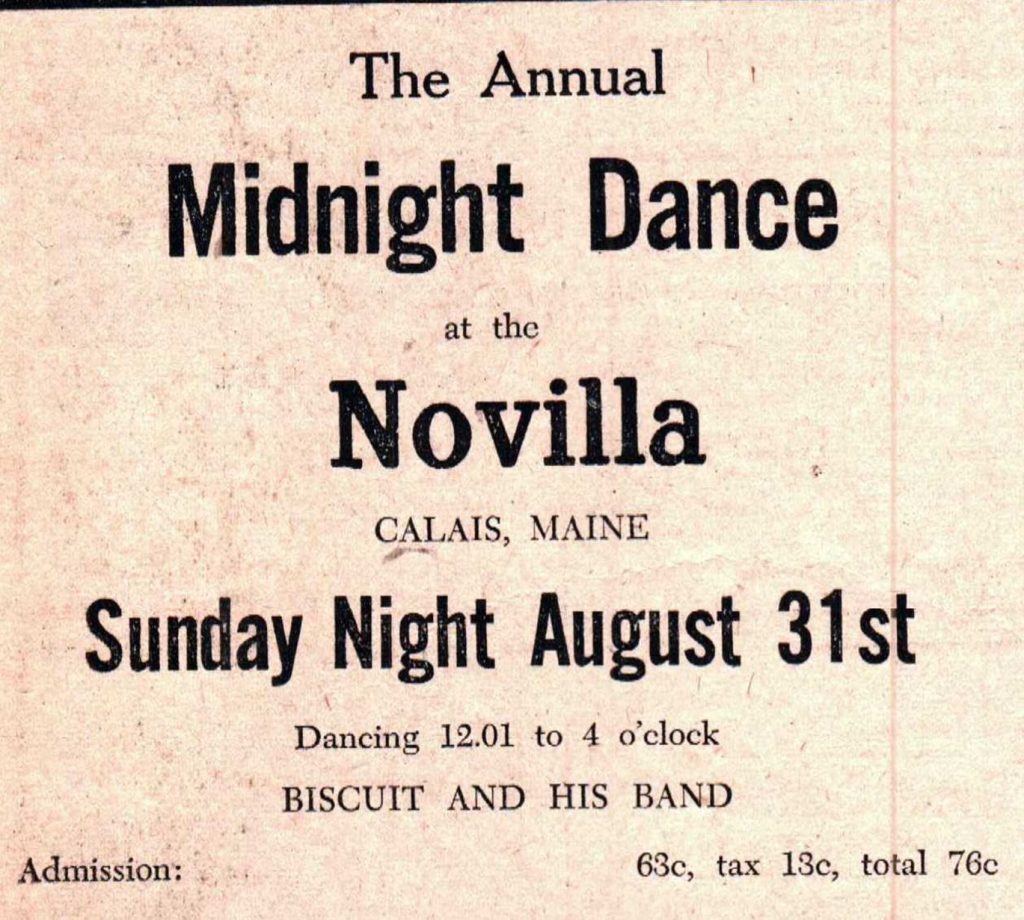
Bic Gilman and his orchestra provided the music for the annual midnight dance on August 31, 1952 at the Novilla Dance Hall on the River Road. Dancing began at 12:01 and admission was 63 cents plus 13 cents tax; and we admit the logic of a 76 cent admission and all the pennies this involves making change escapes us.
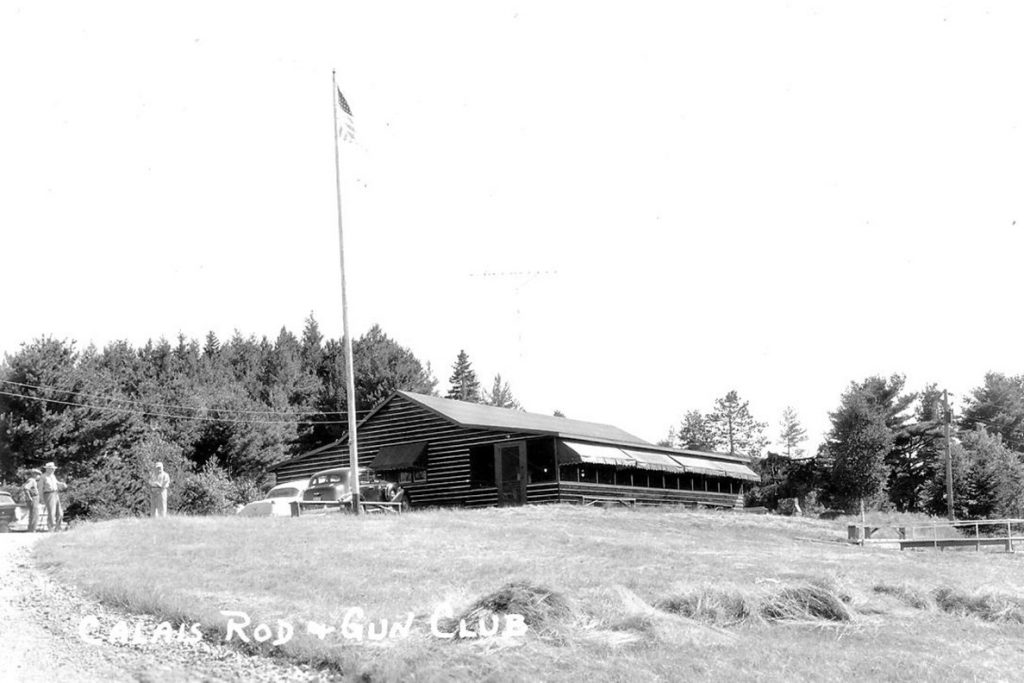
The Rod and Gun Club christened its new lodge in Charlotte in 1952 . . .
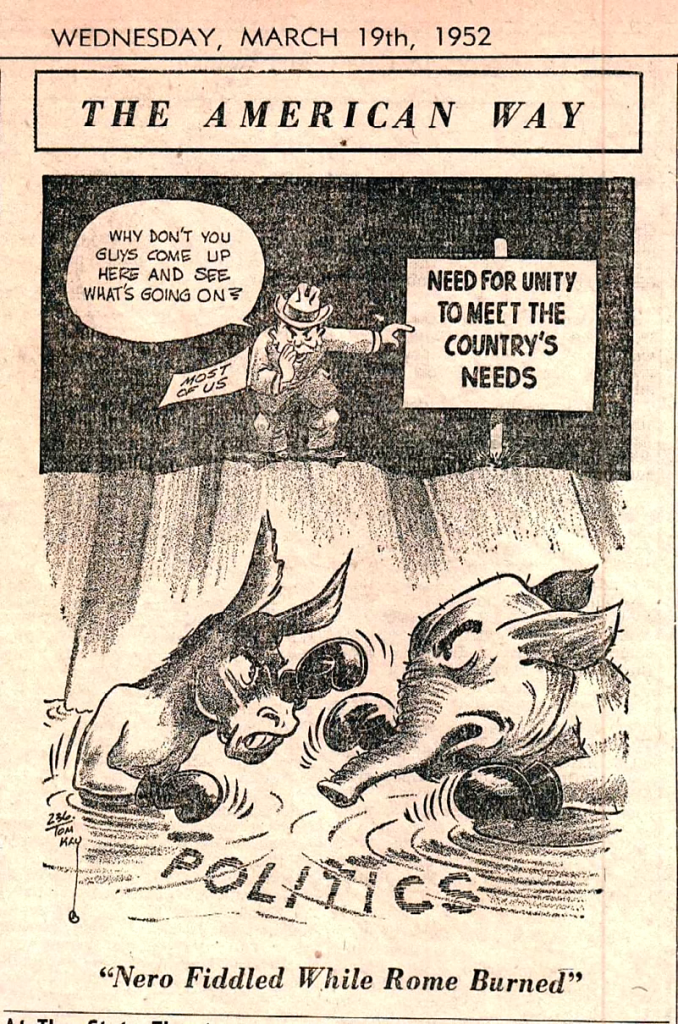
. . . and in politics this cartoon in the Advertiser supports the old saying that the more things change the more they stay the same.
In other local news, John Gay, a very popular local boy, was killed in Korea; “Singin’ in the Rain” enjoyed a long run at the State Theatre; and the Shriners held an international convention in Calais. Thousands of spectators were drawn to the parade and equestrian events at the ball diamond. The Calais senior class officers in 1952 were Don Donovan, Patricia Kittredge, Phillip Fletcher and Jacky Fisher.
In Robbinston the Grange Hall was dedicated, and the Ripley’s Believe It or Not traveling collection spent a couple of days on Main Street in Calais displaying its “Oddities and Curiosities.” Drive-Ins were in the news as developers rushed to get the jump on one another. A proposed drive-in on North Street in Calais was late to the mark as was one in Baileyville; but the Baring Drive-In at the old Baring race track was constructed and for a couple of decades was as popular a weekend spot as could be found in the St. Croix Valley.
The Woodland mill expanded with the addition of the supercalender machine, and the FBI published a wanted poster in the Advertiser seeking information on Sydney Gordon Martin, who had attempted to murder a man in Massachusetts, then escaped from jail and, we assume, was thought to be heading for the border.
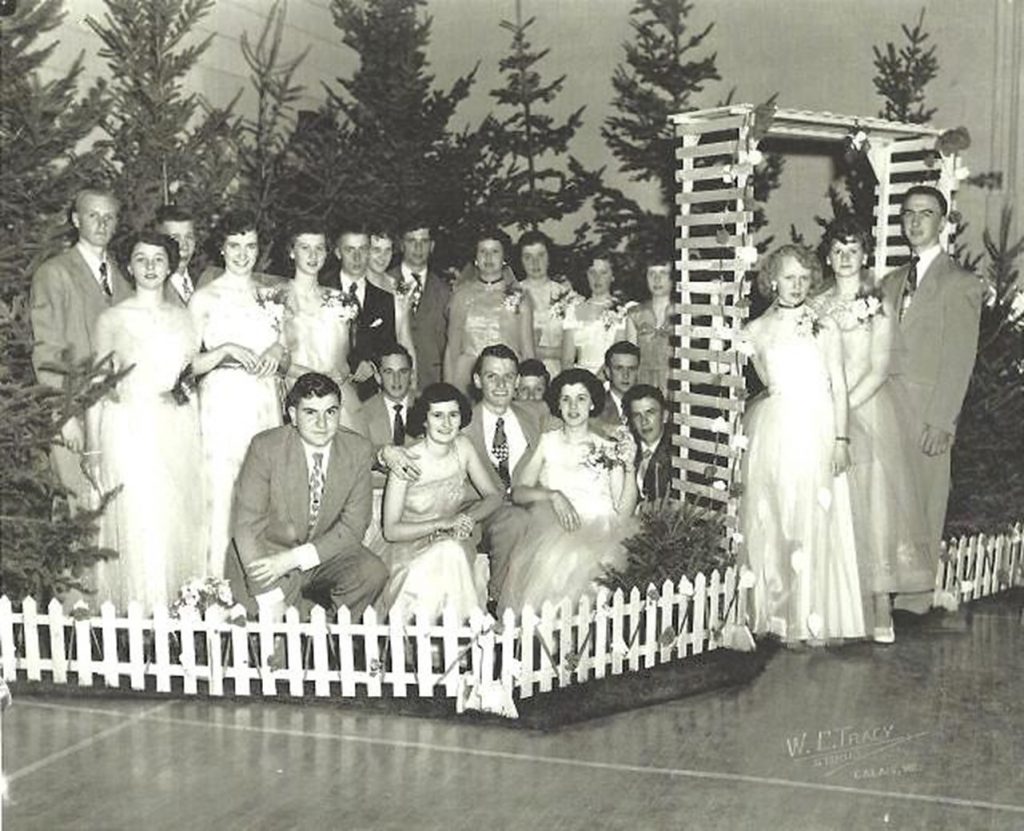
Finally, we give you a photo from the 1952 Calais High Junior Prom. We’re sure someone can identify these folks.
